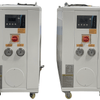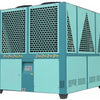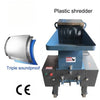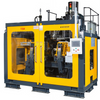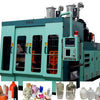Design and Application of 2.5-Liter Extrusion Blow Molding Machines in Modern Packaging Industry Abstract
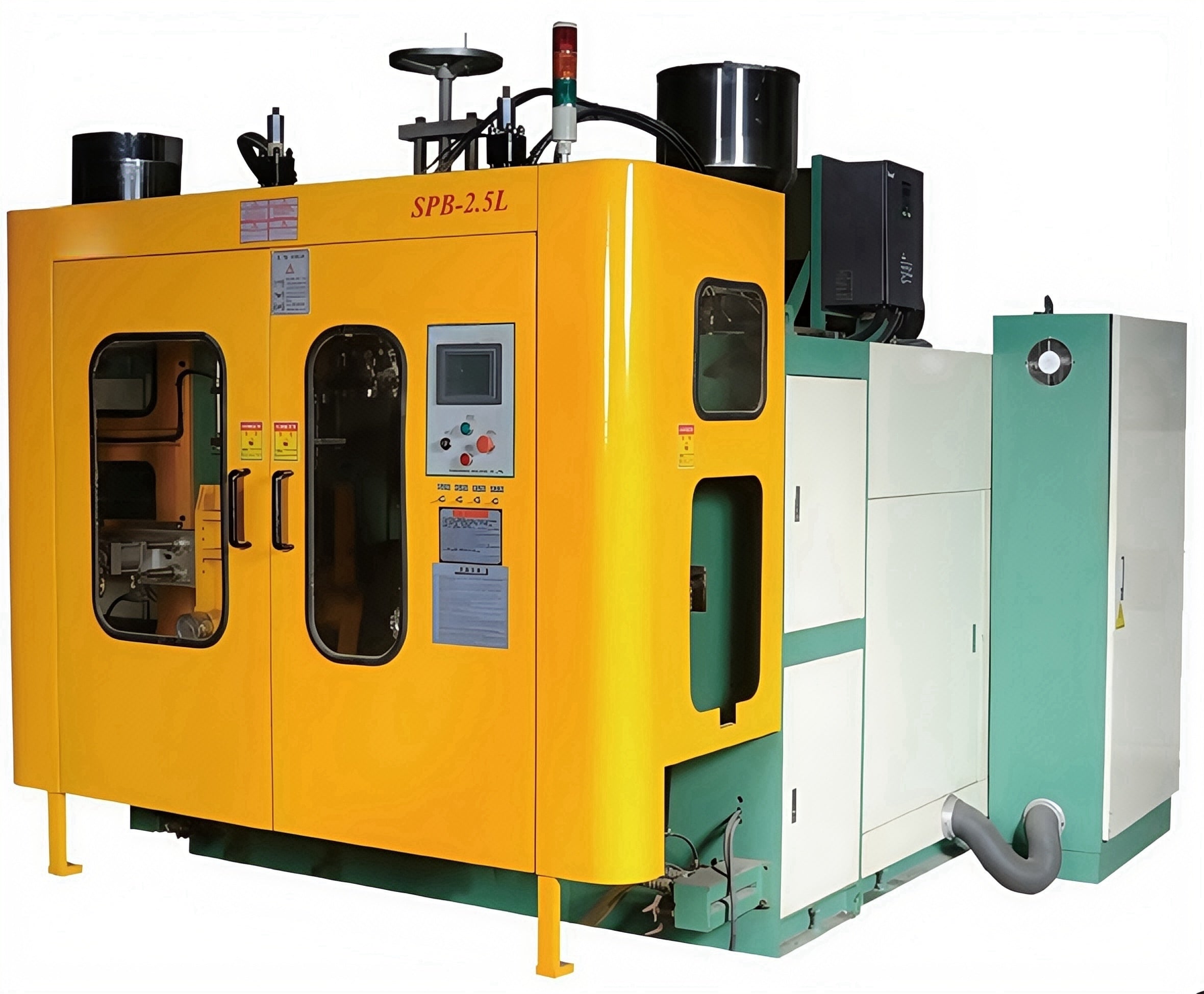
1. Introduction
As global demand for durable, lightweight, and recyclable plastic containers grows, the 2.5L format has emerged as a key standard in industrial and consumer packaging. It balances ergonomic handling, logistical efficiency, and product visibility—making it ideal for premium cooking oils, detergent concentrates, lubricants, and agrochemicals. Unlike injection or stretch blow molding, extrusion blow molding excels in producing seamless, stress-free containers with integrated handles and variable wall thickness, especially in the 2–5L range.
Recent advancements in machine design, such as those seen in the DKB-2.5L2JUWD from Dongguan JinJun Machinery, have elevated 2.5L EBM systems to new levels of speed, precision, and flexibility.
2. Machine Architecture and Key Features
The DKB-2.5L2JUWD is a high-performance, dual-station extrusion blow molding machine engineered for containers up to 2.5 liters [1]. Its core features include:
-
Dual-Station Operation:
Simultaneous extrusion and blowing cycles double throughput and reduce idle time, enabling continuous production. -
Gradient Bottle Technology:
A proprietary feature allowing color or material gradients along the bottle height—used for branding, content differentiation, or aesthetic appeal in cosmetic and edible oil packaging. -
Multi-Layer Co-Extrusion Capability:
Supports 1–6 layer extrusion, enabling barrier structures (e.g., PE/EVOH/PE) for oxygen-sensitive or aggressive chemical contents. -
Hydraulic Drive System:
Robust hydraulic clamping with a force of 150 kN (as seen in the KKB-15T series [1]), ensuring stable mold closure and high repeatability. -
Advanced Control System:
Equipped with Beckhoff PLC-based industrial control (per KKB-15T specifications [1]), offering:- Real-time parison programming
- Automatic weight stabilization
- Short color-change cycles
- Touchscreen HMI with fault diagnostics
-
View Stripe Function:
Integrated transparent vertical bands in otherwise opaque bottles, allowing users to monitor fill levels—a critical feature for industrial and consumer applications.
3. Technical Specifications (Representative Model)
| Parameter | Specification |
|---|---|
| Max. container volume | 2.5 L (optimized range: 0.5–2.5 L) |
| Screw diameter | ~75–90 mm (estimated for 2.5L output) |
| Clamping force | 150 kN |
| Mold cavity options | 1–4 cavities |
| Material compatibility | HDPE, PP, PETG, PVC, multi-layer blends |
| Cycle time (2.5L HDPE) | 8–12 seconds |
| Daily output | 6,000–15,000 units (depending on cavitation) |
| Drive type | Hydraulic with servo-assisted motion control |
| Special functions | Gradient coloring, view stripe, IML-ready |
4. Material and Product Flexibility
The machine processes a wide range of thermoplastics:
- HDPE: For chemical drums, detergent bottles (excellent impact and chemical resistance)
- PP: For hot-fill edible oil containers (up to 95°C)
- PETG: For high-clarity cosmetic or premium oil bottles
- Multi-layer structures: For barrier protection in agrochemical or pharmaceutical packaging
The gradient bottle capability—unique to models like DKB-2.5L2JUWD—enables visual storytelling through color transitions (e.g., golden-to-clear for olive oil), enhancing shelf appeal without post-molding decoration.
5. Industrial Applications
2.5L blow-molded containers are widely used in:
- Food & Beverage: Premium olive oil, sunflower oil, vinegar
- Household & Cleaning: Concentrated detergents, fabric softeners
- Automotive: Engine oil, transmission fluid bottles
- Agriculture: Pesticide and fertilizer containers (with chemical-resistant layers)
- Cosmetics: Luxury body oils, hair serums in gradient PETG bottles
The inclusion of tamper-evident neck finishes, integrated handles, and uniform wall distribution ensures compliance with safety and usability standards.
6. Advantages Over Alternative Technologies
Compared to injection blow molding (IBM) or reheat stretch blow molding (RSBM), 2.5L EBM offers:
- Lower tooling cost (no preform molds)
- Superior design freedom (handles, grips, non-cylindrical shapes)
- Inherent suitability for multi-layer and opaque materials
- Scalable production from prototype to mass output on one platform
- Easier recycling due to mono-material or clearly separated layer structures
7. Sustainability and Future Trends
Modern 2.5L EBM machines are increasingly aligned with circular economy goals:
- Compatibility with post-consumer recycled (PCR) HDPE/PP
- Onboard granulators for flash recycling
- Energy-efficient hydraulics with load-sensing pumps
- Digital production tracking for carbon footprint reporting
Future developments may include AI-driven parison control, predictive maintenance via IoT, and fully electric hybrid drives to further reduce environmental impact.
8. Conclusion
The 2.5-liter extrusion blow molding machine stands at the intersection of functionality, aesthetics, and efficiency in modern packaging. Models like the DKB-2.5L2JUWD demonstrate how advanced engineering—gradient coloring, multi-layer co-extrusion, dual-station automation, and intelligent control—can meet the evolving demands of high-value markets. As industries prioritize sustainability, customization, and smart manufacturing, 2.5L EBM technology will continue to play a pivotal role in shaping the future of plastic container production.
-
Posted in
extrusion blow molding machine

